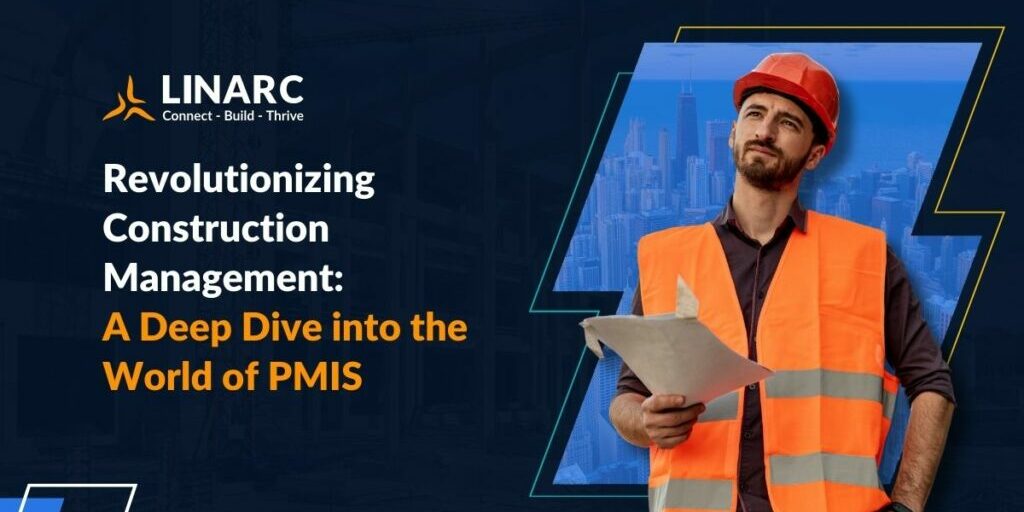Revolutionizing Construction Management: A Deep Dive into the World of PMIS

This article covers:
- Unveiling the Power of Project Management Information Systems (PMIS)
- Understanding Project Management Information Systems (PMIS)
- Alternatives to PMIS Software
- Drawbacks of Using Spreadsheets
- Key Features to Look for in a PMIS
- PMIS in Every Phase of Project Management
- Evaluating and Selecting the Right PMIS
- Advantages of an Integrated PMIS
- Conclusion
Unveiling the Power of Project Management Information Systems (PMIS)
In construction management, Project Management Information Systems (PMIS) have emerged as indispensable tools for professionals seeking efficient project organization and enhanced decision-making capabilities. This comprehensive exploration delves into the essentials of PMIS, the drawbacks of alternatives like Excel, the key features to look for when selecting the best construction project management software, and how PMIS can fast track project management and proves valuable in every phase of the project management process.
Understanding Project Management Information Systems (PMIS)
A PMIS is a computerized system that serves as the backbone of project management, empowering project managers to centralize data storage, track progress, and analyze information. It encompasses a suite of tools including task and resource management, schedule builders, communication platforms, risk management tools, and document management systems. The Project Management Institute (PMI) has repeatedly underscored the indispensability of these systems in modern project management, emphasizing their role in increasing efficiency and optimizing performance.
The benefits of PMIS extend beyond simple data storage; they provide a centralized hub for construction professionals to create, collect, store, and control the flow of information related to their projects. Owners, project managers, and stakeholders can analyze the stored data, making informed decisions that impact the present and future. According to a report from KPMG, construction companies that invest in project management software boost labor productivity by a remarkable 6x for every dollar spent, with a 7x return on investment in direct cost savings on time and materials.
As the construction industry witnesses the transformative impact of PMIS, the demand for the best construction project management software continues to rise. This growth is fueled by the tangible benefits, including minimized delays, cost overruns, and risks, ultimately leading to more manageable, efficient, and profitable construction projects.
Alternatives to PMIS Software
While PMIS stands out as a robust solution, alternatives like Microsoft Excel and Google Sheets persist, especially in organizations undergoing digital transformation. Excel, with its familiarity and functionality, remains a popular choice for estimating projects, tracking finances, and conducting day-to-day project management tasks. Google Sheets, as a cloud-based alternative, offers similar functionality and convenience.
However, despite their widespread use, these spreadsheet tools come with inherent limitations. Excel and Google Sheets, while proficient in handling complex tasks and presenting data in easy-to-read formats, struggle to translate well to mobile devices. This limitation impedes field use, a critical aspect of construction project management. Furthermore, as construction companies grow, the need for advanced data integration, mobile access, and broader functionality becomes more pronounced, areas where standalone applications and spreadsheets fall short.
Drawbacks of Using Spreadsheets
Spreadsheets like Excel and Google Sheets, while efficient for certain tasks, encounter challenges when applied to the evolving and expanding needs of modern construction businesses. Although these tools can handle complex data and present it in user-friendly formats, they often lack the sophistication required for capturing field data that needs analysis back in the office.
As construction companies scale, the importance of data integration and analysis, mobile access, and enhanced functionality becomes increasingly critical. Spreadsheets, with their limited capabilities, struggle to meet the evolving demands of a growing construction enterprise. The disjointed nature of using spreadsheets and standalone applications becomes apparent as construction projects become more intricate and multifaceted.
Key Features to Look for in a PMIS
Selecting the best construction project management software requires careful consideration of essential features. Regardless of the specific needs of a construction project, a robust PMIS should include the following:
- Team Member Directory and Central Communication Platform:
- Facilitates seamless communication among project stakeholders.
- Enhances collaboration by providing a central hub for project-related discussions.
- Master Scheduler for Broad Overviews and Construction Planning:
- Offers a comprehensive view of project timelines and milestones.
- Aids in efficient construction planning and resource allocation.
- Project Financial Software or ERP Integrations:
- Allows the creation of baseline budgets and tracks costs
- Streamlines financial processes, contributing to overall project efficiency.
- Material Procurement Planning and Construction Scheduling:
- Enables strategic planning for material procurement.
- Enhances construction scheduling for optimal project execution.
- Construction Resource Management Software:
- Facilitates efficient allocation and management of construction resources.
- Contributes to improved project performance and timely completion.
- Custom Templates for Separate and Aligned Tasks:
- Provides flexibility in task management.
- Allows customization based on the unique requirements of each project.
- Fieldwork Journals and Templates for Incident Logging and Daily Work Reports:
- Streamlines the documentation of fieldwork activities.
- Enhances incident reporting and daily work documentation for improved project transparency.
The scope and scale of construction projects vary, and the tools required depend on the specific needs of each project. Integrated project management systems consolidate all necessary tools into a unified platform to minimize delays, cost overruns, and risks, and make project management more efficient and profitable.

PMIS in Every Phase of Project Management
A robust PMIS proves valuable throughout all phases of the project management process: initiation, planning, execution, and project closeout.
1. Initiation Phase:
- Electronically submit vital documentation, bids, RFIs, and tenders.
- Collaborate on project scope and deadlines, ensuring effective information flow.
- Fast track project management to keep projects on time and within budget.
2. Planning Phase:
- Outline tasks, develop work packages, and create work breakdown structures.
- Utilize master schedule builders for accurate planning and design.
- Enable subcontractors and suppliers to collaborate digitally.
3. Execution Phase:
- Provide a central location for all relevant plans and documents.
- Use visual aids like Gantt charts and work breakdown structures to ensure project adherence.
- Facilitate collaboration to coordinate deadline constraints and changes.
4. Closeout Phase:
- Streamline commissioning and closeout processes by digitizing punch lists, documentation, and manuals.
- Schedule closeout meetings, inspections, and follow-ups through project management software.
- Track work progress through real-time updates on punch list tasks.
Evaluating and Selecting the Right PMIS
Evaluating various PMIS is crucial to ensure you select the right system for your projects and remain competitive in the construction industry. Here are key factors to consider:
Ease of Use: The PMIS should be intuitive, requiring minimal training for team members. An interactive user interface ensures understanding across all team members.
Flexibility and Integration: The PMIS should have an open API, allowing easy integration with legacy tools. Customizability is crucial for adapting the system to the unique needs of your business.
Scalability: The system should accommodate new team members easily. Secure access for data sharing and collection for every stakeholder is essential for scalability.
Integration vs. Using Too Many Tools: Avoid using too many tools for different tasks, as it can slow down project management processes. An integrated PMIS streamlines project management, benefiting all stakeholders.
Advantages of an Integrated PMIS
The advantages of an Integrated Project Management Information System are multifaceted and impactful, offering a range of benefits to project stakeholders.
Centralized Data Storage:
Empowers stakeholders to create, share, and store vital data in a secure and accessible platform. Increases the likelihood of stakeholders utilizing the information for process improvement.
Advanced Tracking:
Utilizes advanced technology to keep critical tasks and milestones in front of stakeholders. Mobile applications provide real-time project performance insights.
Improved Decision-making and Collaboration:
Creates a central source of truth, improving communication and facilitating faster decision-making. Enhances task scheduling and collaboration on complex construction projects.
Conclusion
The selection of construction project management software involves a meticulous examination of PMIS features aligned with the unique requirements of construction projects. Streamlining project management processes and contributing to improved collaboration, decision-making, and project success, underscores the significance of an Integrated PMIS in modern project management.
As the construction industry continues to evolve, embracing the transformative power of PMIS becomes paramount for aligning with the evolving needs of project stakeholders and the dynamic nature of project execution, staying competitive and ensuring successful project outcomes.





